Proteases
Proteases is a general term for a class of enzymes that hydrolyze protein peptide chains. According to the way they degrade polypeptides, they are divided into two categories: endopeptidases and telopeptidases. The former can cut the large molecular weight polypeptide chain from the middle to form prions and peptones with smaller molecular weights; the latter can be divided into carboxypeptidase and aminopeptidase, which respectively remove the peptide from the free carboxyl terminus or free amino terminus of the polypeptide one by one. Chain hydrolysis produces amino acids.
A general term for a class of enzymes that hydrolyze peptide bonds in proteins. According to the way they hydrolyze polypeptides, they can be divided into endopeptidases and exopeptidases. Endopeptidase cleaves the interior of the protein molecule to form smaller molecular weight peptones and peptones. Exopeptidase hydrolyzes peptide bonds one by one from the end of the free amino group or carboxyl group of protein molecules, and frees amino acids, the former is aminopeptidase and the latter is carboxypeptidase. Proteases can be classified into serine proteases, sulfhydryl proteases, metalloproteases and aspartic proteases according to their active centers and optimum pH. According to the optimum pH value of its reaction, it is divided into acidic protease, neutral protease and alkaline protease. The proteases used in industrial production are mainly endopeptidases.
Proteases are widely found in animal offal, plant stems and leaves, fruits and microorganisms. Microbial proteases are mainly produced by molds and bacteria, followed by yeast and actinomycetes.
Enzymes that catalyze the hydrolysis of proteins. There are many kinds, the important ones are pepsin, trypsin, cathepsin, papain and subtilisin. Proteases have strict selectivity for the reaction substrates they act on. A protease can only act on certain peptide bonds in protein molecules, such as the peptide bonds formed by the hydrolysis of basic amino acids catalyzed by trypsin. Proteases are widely distributed, mainly in the digestive tract of humans and animals, and are abundant in plants and microorganisms. Due to limited animal and plant resources, the industrial production of protease preparations is mainly prepared by fermentation of microorganisms such as Bacillus subtilis and Aspergillus terrestris.
Targets for Proteases
- Caspase(114)
- Aminopeptidase(24)
- ACE(74)
- Calpains(20)
- Carboxypeptidase(10)
- Cathepsin(81)
- DPP-4(31)
- Elastase(26)
- Gamma Secretase(67)
- HCV Protease(59)
- HSP(113)
- HIV Integrase(37)
- HIV Protease(47)
- MMP(228)
- NS3/4a protease(8)
- Serine Protease(18)
- Thrombin(58)
- Urokinase(4)
- Cysteine Protease(0)
- Other Proteases(18)
- Tyrosinases(47)
- 15-PGDH(1)
- Acetyl-CoA Carboxylase(13)
- Acyltransferase(59)
- Aldehyde Dehydrogenase (ALDH)(28)
- Aminoacyl-tRNA Synthetase(9)
- ATGL(1)
- Dipeptidyl Peptidase(56)
- Drug Metabolite(457)
- E1/E2/E3 Enzyme(90)
- Endogenous Metabolite(1636)
- FABP(30)
- Farnesyl Transferase(23)
- Glutaminase(14)
- Glutathione Peroxidase(14)
- Isocitrate Dehydrogenase (IDH)(28)
- Lactate Dehydrogenase(17)
- Lipoxygenase(234)
- Mitochondrial Metabolism(207)
- NEDD8-activating Enzyme(7)
- Neprilysin(12)
- PAI-1(13)
- Ser/Thr Protease(41)
- Tryptophan Hydroxylase(13)
- Xanthine Oxidase(18)
- MALT1(10)
- PCSK9(1)
Products for Proteases
- Cat.No. Nombre del producto Información
-
GC16812
3-Methylglutaric acid
El Ácido 3-metilglutÁrico, un metabolito de la leucina, es un Ácido orgÁnico dicarboxÍlico C6 conspicuo asociado clÁsicamente con dos deficiencias enzimÁticas distintas de la vÍa de la leucina, 3-hidroxi-3-metilglutaril CoA liasa (HMGCL) y 3-metilglutaconil CoA hidratasa (AUH) .
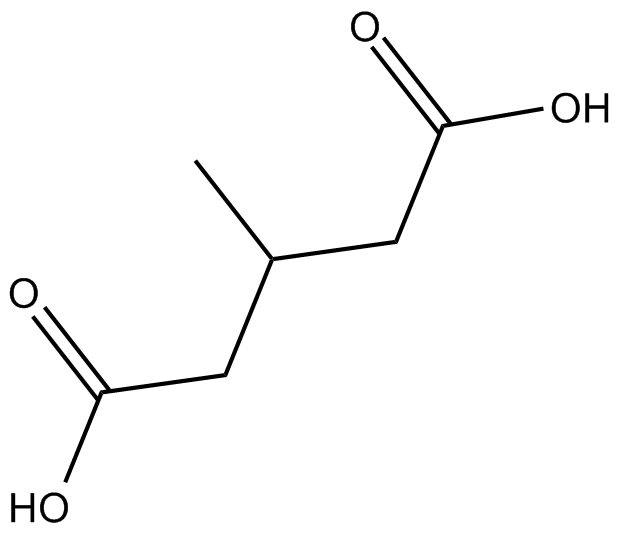
-
GC62795
3-Methylhistamine dihydrochloride
El diclorhidrato de 3-metilhistamina es un producto de degradaciÓn de la histamina.
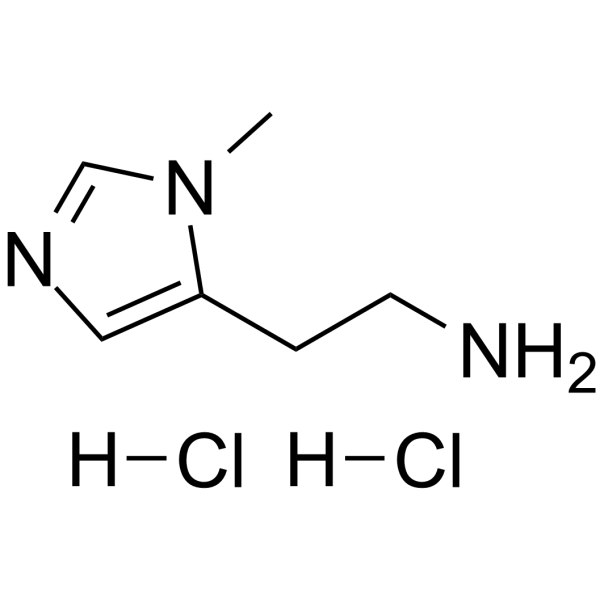
-
GC38297
3-Methylindolin-2-one
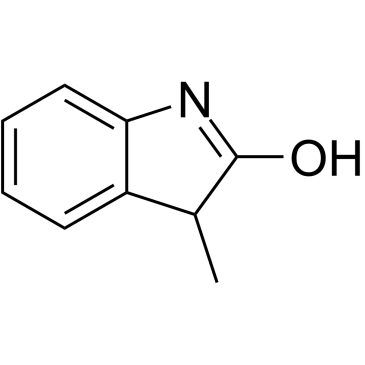
-
GC33525
3-Methyluridine
La 3-metiluridina (N3-metiluridina) es un nucleÓsido de ARN modificado.
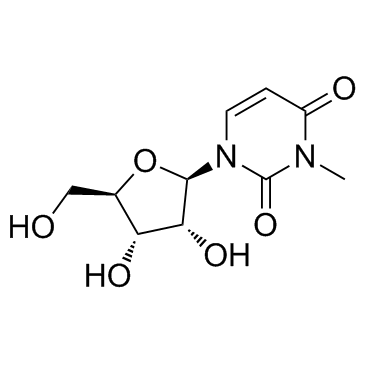
-
GC62796
3-Methylvaleric Acid
El Ácido 3-metilvalérico es un ingrediente aromatizante.
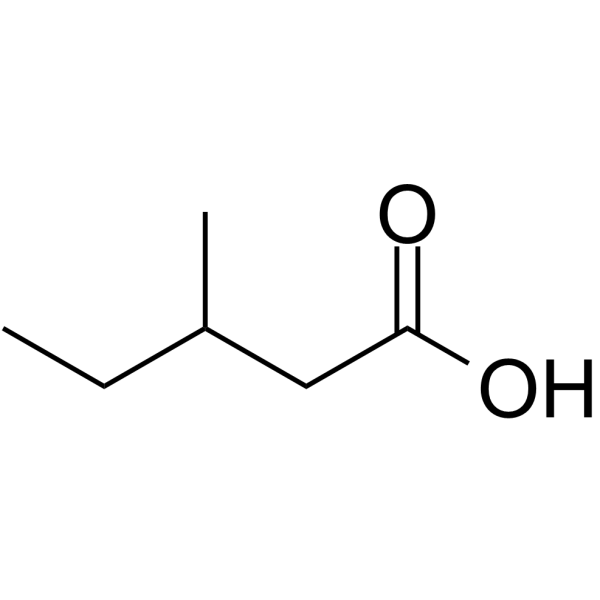
-
GC30635
3-Methylxanthine
La 3-metilxantina, un derivado de la xantina, es un inhibidor del monofosfato de guanosina cÍclico (GMP), con una IC50 de 920 μM en mÚsculo traqueal aislado de cobayo.

-
GC64078
3-O-Acetyl-11-hydroxy-beta-boswellic acid
El Ácido 3-O-acetil-11-hidroxi-beta-boswélico es un potente inhibidor de la 5-lipoxigenasa (5-LO).
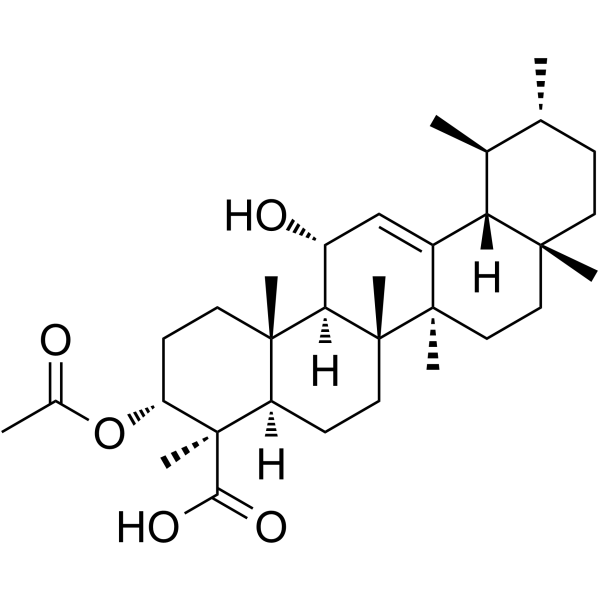
-
GC61717
3-O-Ethyl-L-ascorbic acid
El Ácido 3-O-etil-L-ascÓrbico, un derivado estable de la vitamina C, es un inhibidor cosmético de la tirosinasa con capacidad blanqueadora.
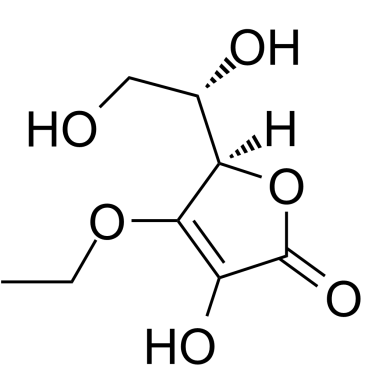
-
GC42307
3-O-methyl-L-DOPA (hydrate)
3-O-methyl-L-DOPA is a metabolite of L-DOPA, produced by the activity of catechol O-methyltransferase.

-
GC60505
3-O-Methyldopa
La 3-O-metildopa (3-metoxi-L-tirosina) es un metabolito de la L-DOPA formado por la catecol-O-metiltransferasa (COMT).
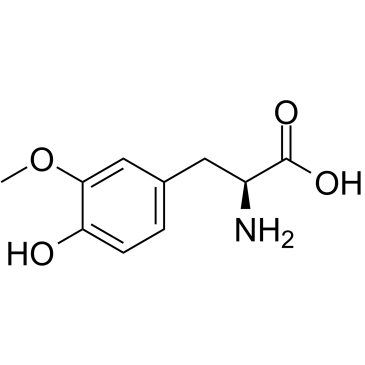
-
GC60506
3-O-Methyldopa D3
La 3-O-metildopa D3 (3-metoxi-L-tirosina-d3) es 3-O-metildopa marcada con deuterio.
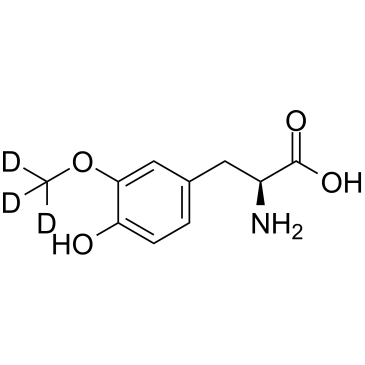
-
GC62797
3-Oxo-4,6-choladien-24-oic acid
El Ácido 3-oxo-4,6-coladien-24-oic es un metabolito endÓgeno.
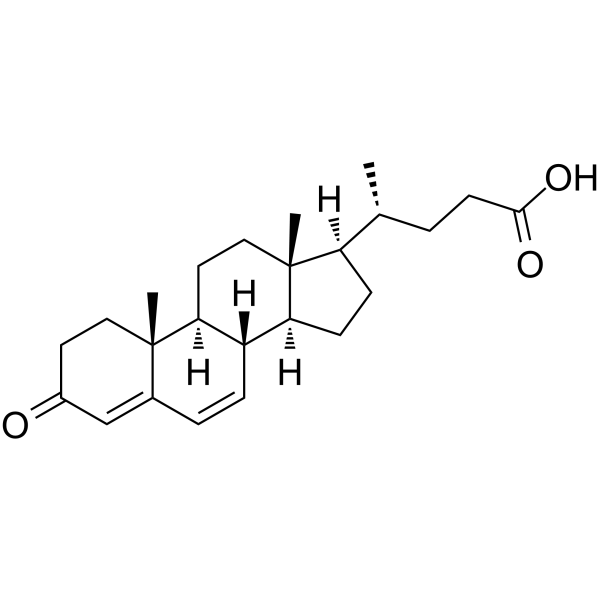
-
GC64220
3-Oxo-7-hydroxychol-4-enoic acid
El Ácido 3-oxo-7-hidroxicol-4-enoico es un metabolito endÓgeno.
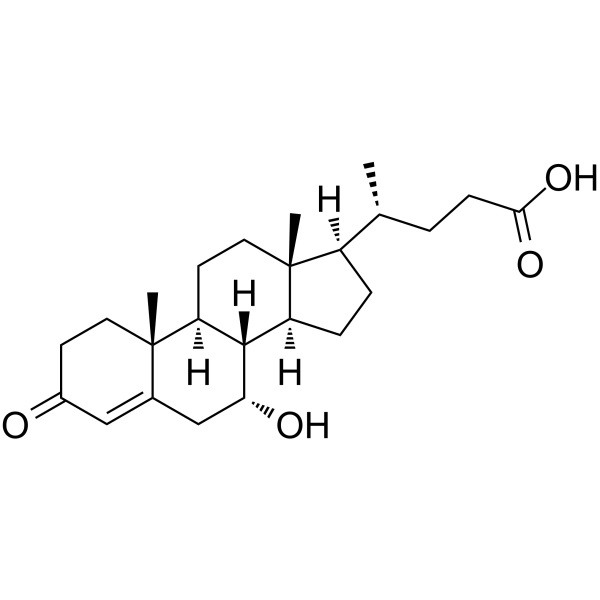
-
GC45339
3-Oxocholic Acid
El ácido 3-oxocólico es un metabolito del ácido oxo-biliar y también un importante producto de degradación del cólico por C.

-
GC30353
3-Oxopentanedioic acid
El Ácido 3-oxopentanodioico es un Ácido dicarboxÍlico simple, que es bien conocido por su uso en la sÍntesis de tropinona.
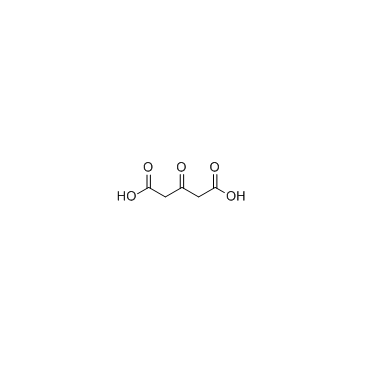
-
GC62798
3-Phenylbutyric acid
El Ácido 3-fenilbutÍrico se metaboliza por oxidaciÓn inicial del anillo de benceno y por oxidaciÓn inicial de la cadena lateral.
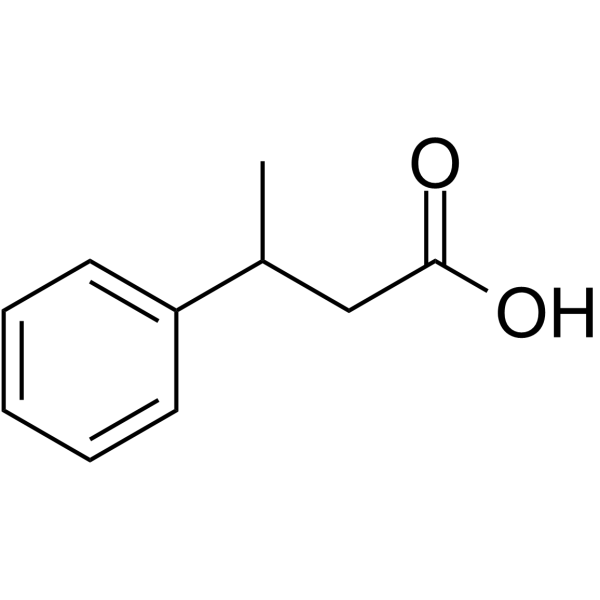
-
GC61582
3-Phenyltoxoflavin
La 3-Feniltoxoflavina, un derivado de la Toxoflavina, es un inhibidor de la Hsp90, con una Kd de 585 nM para la interacciÓn de la Hsp90-TPR2A. La 3-feniltoxoflavina tiene actividad anticancerÍgena.
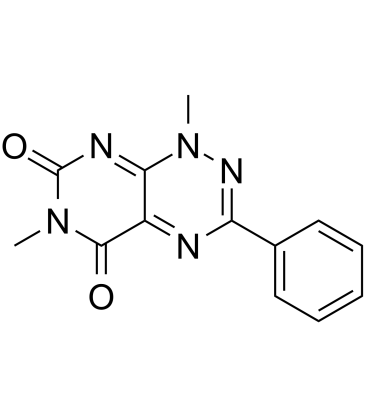
-
GC33604
3-Pyridineacetic acid
El Ácido 3-piridinacético es un homÓlogo superior del Ácido nicotÍnico, un producto de degradaciÓn de la nicotina (y otros alcaloides del tabaco).
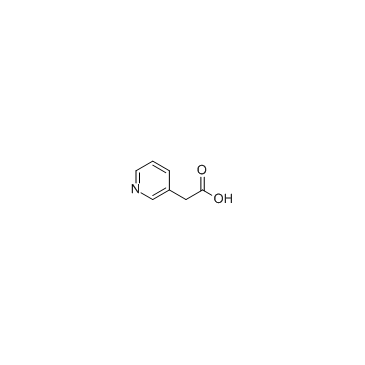
-
GC31553
3b-Hydroxy-5-cholenoic acid
El Ácido 3b-hidroxi-5-colenoico es un Ácido biliar monohidroxilado de origen endÓgeno y podrÍa encontrarse en niÑos con el sÍndrome de hipoplasia ductular hepÁtica.
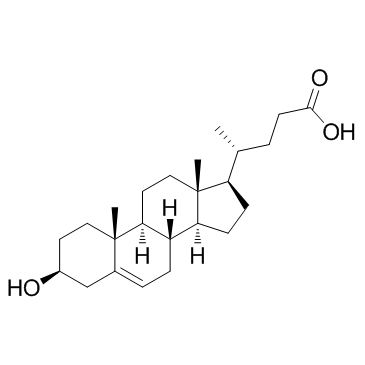
-
GC18817
3β-hydroxy-5-Cholestenoic Acid
3β-hydroxy-5-Cholestenoic acid is an active metabolite of cholesterol formed when cholesterol is metabolized by the cytochrome P450 (CYP) isomer CYP27A1.
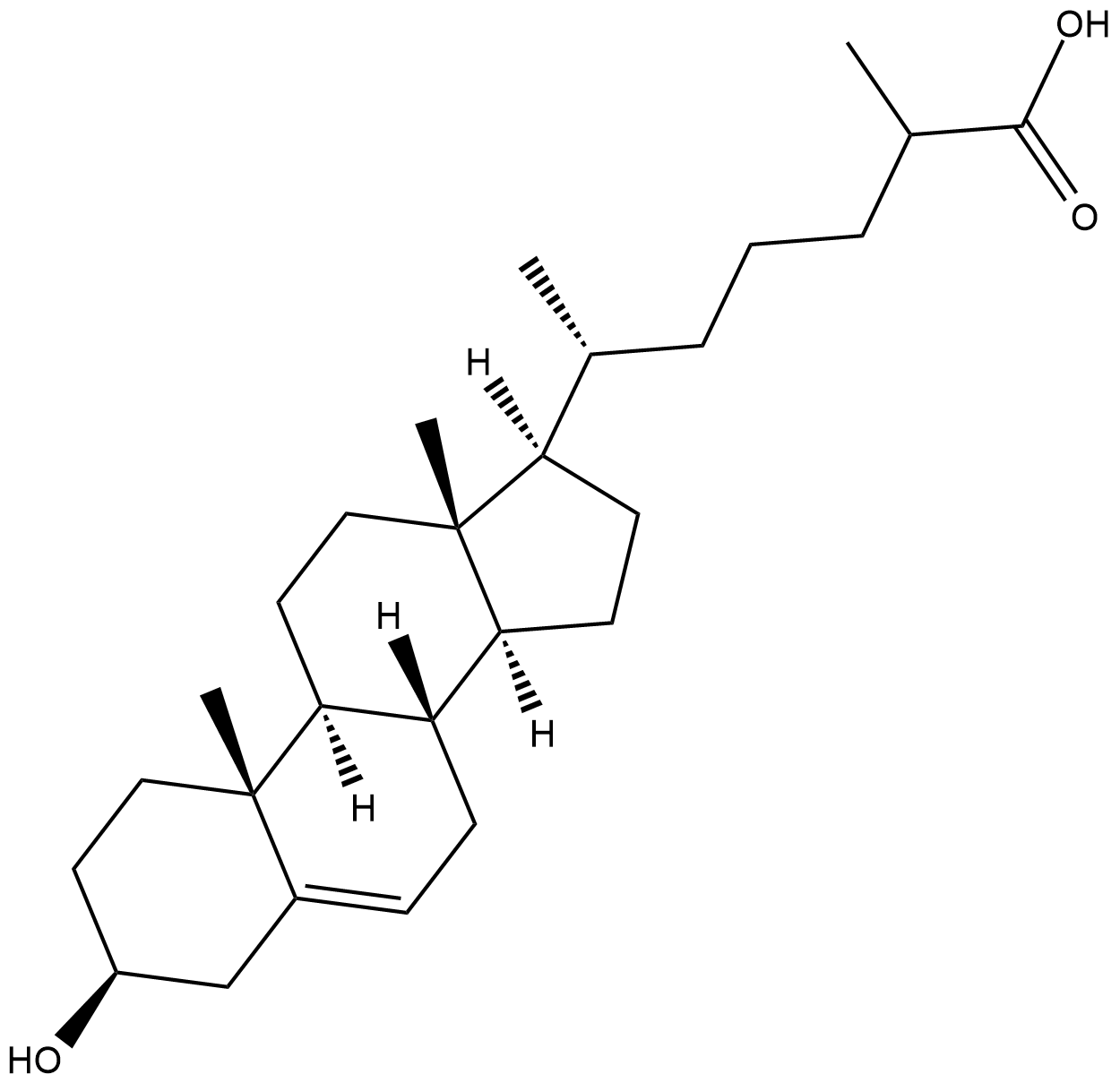
-
GC49367
4’-hydroxy Atomoxetine Glucuronide (hydrate)
A metabolite of atomoxetine

-
GC49252
4’-hydroxy Trazodone
A metabolite of trazodone

-
GC30277
4',5-Dihydroxyflavone
La 4',5-dihidroxiflavona es un inhibidor de la LOX-1 de soja y de la α-glucosidasa de levadura, con una Ki de 102,6 μM para la LOX-1 de soja y una IC50 de 66 μM para la α-glucosidasa de levadura.
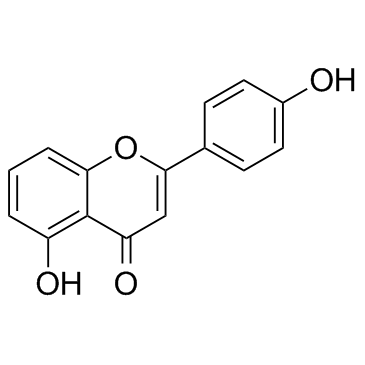
-
GC33976
4',7-Dimethoxyisoflavone (Dimethoxydaidzein)
4',7-Dimethoxyisoflavone (Dimethoxydaidzein) se aÍsla de las hojas de Albizzia lebbeck, que muestra actividad antifÚngica.
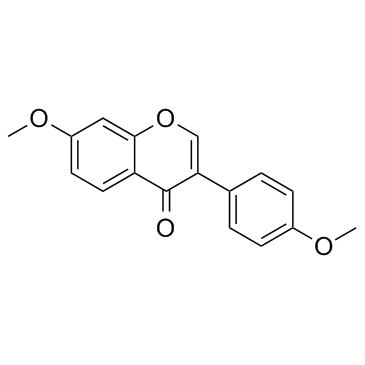
-
GC18527
4'-hydroxy Flurbiprofen
A major active metabolite of flurbiprofen
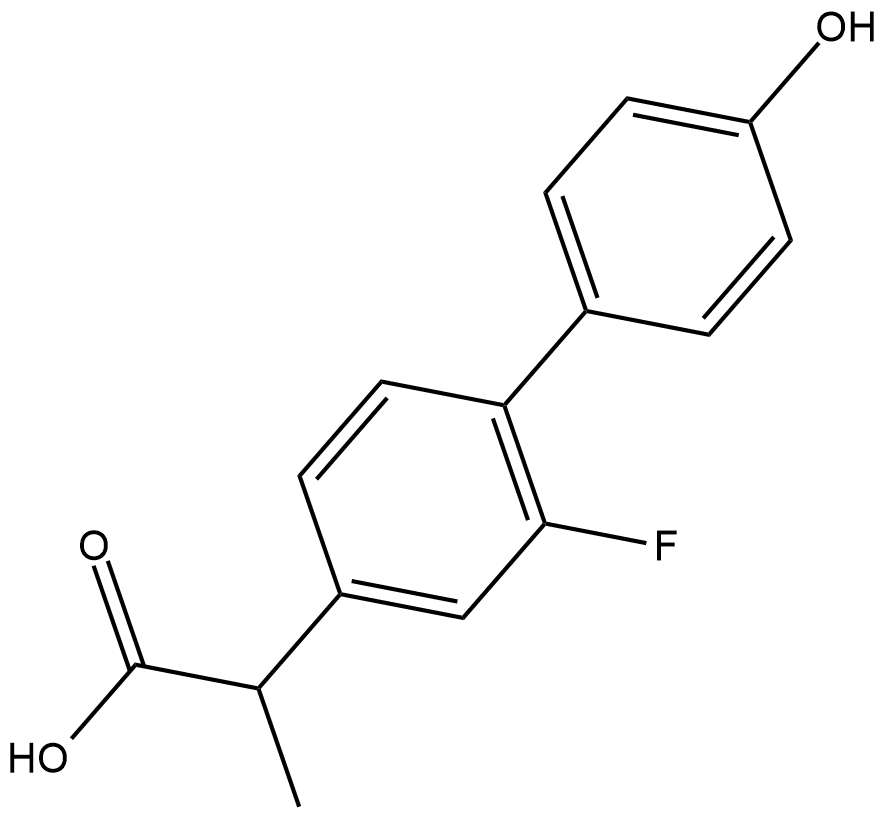
-
GC41003
4'-O-methyl Quercetin
4'-O-metil Quercetina (4'-O-Metil Quercetina) es un derivado flavonoide natural de la quercetina, con efectos antioxidantes y antiinflamatorios.

-
GC62800
4,4’-Disulfanediylbis(2-aminobutanoic acid)
4,4’-Disulfanediylbis(2-aminobutanoic acid) es un metabolito endógeno.
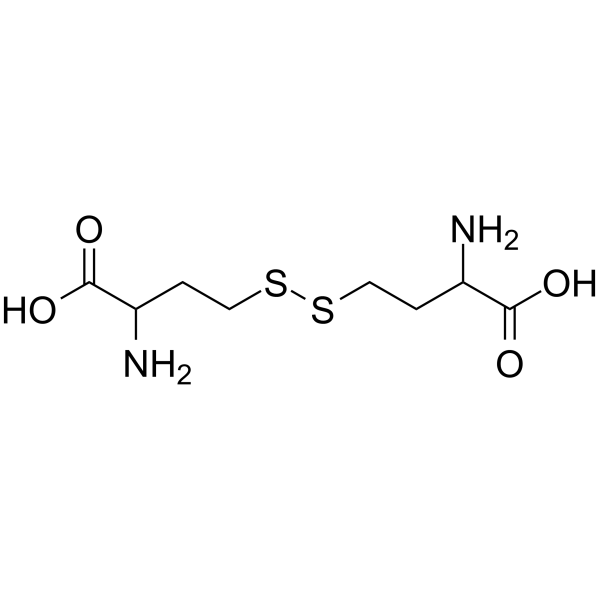
-
GC60510
4,4-Dimethoxy-2-butanone
La 4,4-dimetoxi-2-butanona es un metabolito endÓgeno.
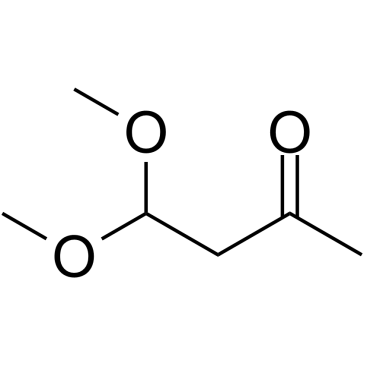
-
GC49752
4,5-Desisopropylidene Topiramate
An inactive metabolite of topiramate

-
GC32483
4,6-Dioxoheptanoic acid
El Ácido 4,6-dioxoheptanoico es un potente inhibidor de la biosÍntesis del hemo.
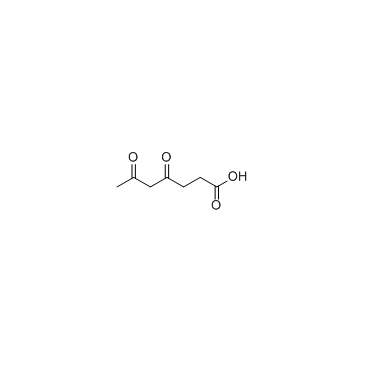
-
GC31640
4-(1,2-Dihydroxyethyl)benzene-1,2-diol
Se encuentra que el 4-(1,2-dihidroxietil)benceno-1,2-diol, un metabolito normal de la norepinefrina, estÁ asociado con el sÍndrome de Menkes.
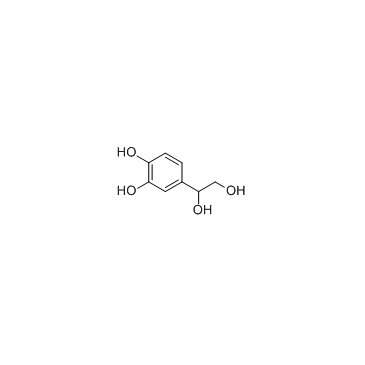
-
GC49337
4-Acetamidobenzenesulfonamide
A metabolite of asulam and sulfanilamide

-
GC33504
4-Acetamidobutanoic acid (N-acetyl GABA)
Ácido 4-acetamidobutanoico (N-acetil GABA) (N-acetil GABA), el principal metabolito de GABA, exhibe actividades antioxidantes y antibacterianas.
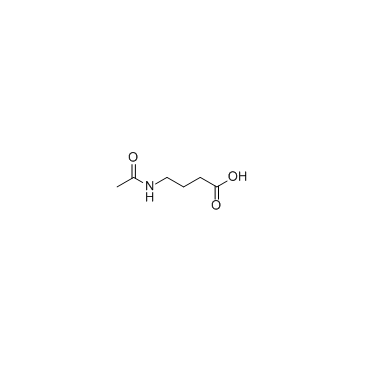
-
GC45341
4-Amino-6-chloro-1,3-benzenedisulfonamide

-
GC66484
4-Amino-L-phenylalanine hydrochloride
El clorhidrato de 4-amino-L-fenilalanina (H-Phe(4-NH2)-OH) es un metabolito endógeno.
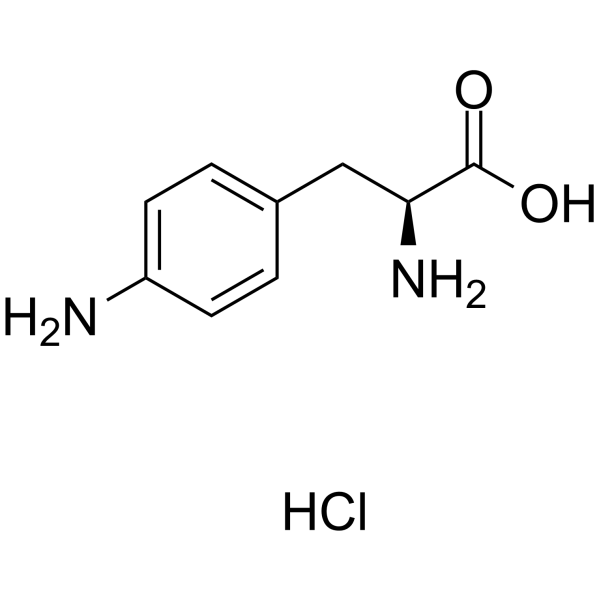
-
GC10996
4-Aminobenzoic acid
El Ácido 4-aminobenzoico es un intermediario en la sÍntesis de folato por bacterias, plantas y hongos.
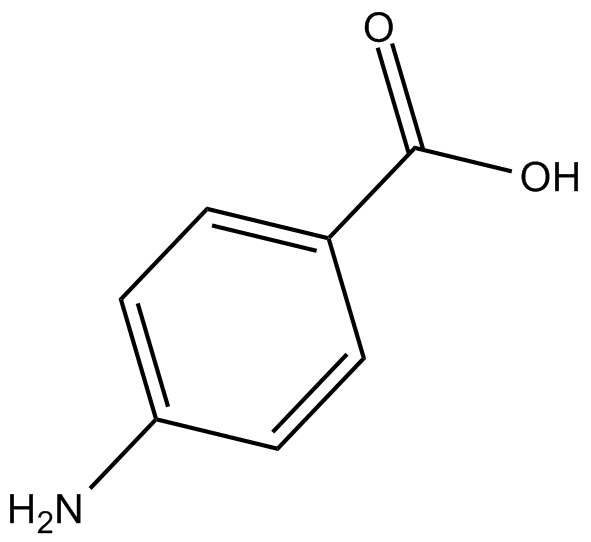
-
GC16443
4-Aminohippuric Acid
El Ácido 4-aminohipÚrico es un agente de diagnÓstico, Útil en pruebas médicas que involucran el riÑÓn, utilizado en la mediciÓn del flujo plasmÁtico renal.
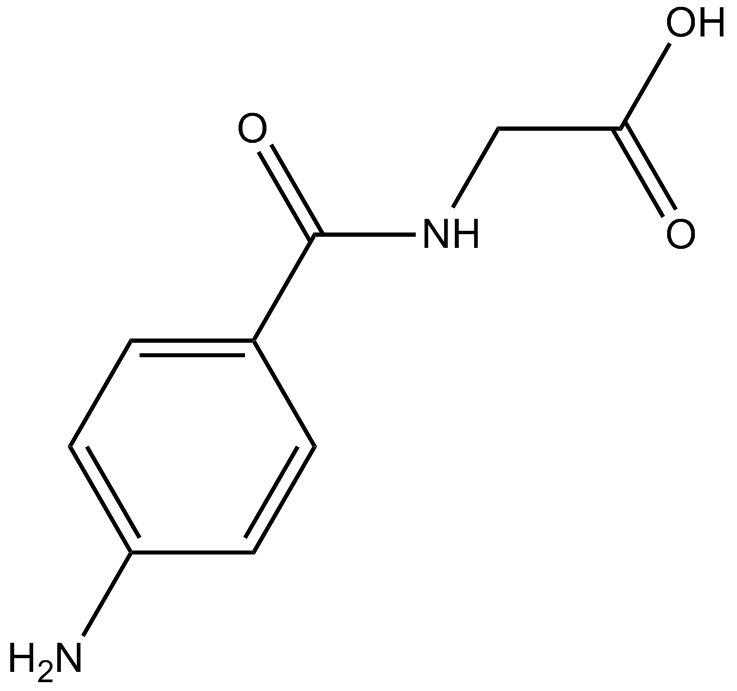
-
GC39473
4-Bromo-3-hydroxybenzoic acid
El Ácido 4-bromo-3-hidroxibenzoico es un metabolito de la brocresina y un inhibidor de la histidina descarboxilasa (HDC) con IC50 de 1 mM para la HDC gÁstrica y fetal de rata.
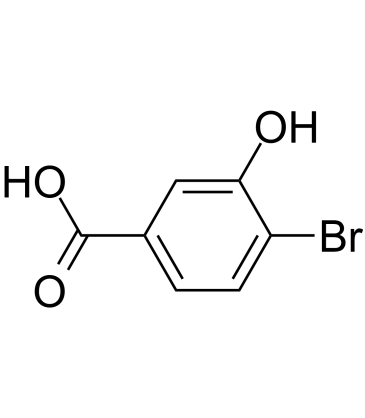
-
GC30513
4-Butylresorcinol (Butylresorcinol)
El 4-butilresorcinol (butilresorcinol) es un derivado de fenol que puede inhibir la tirosinasa con IC50 de 11,27 μM.
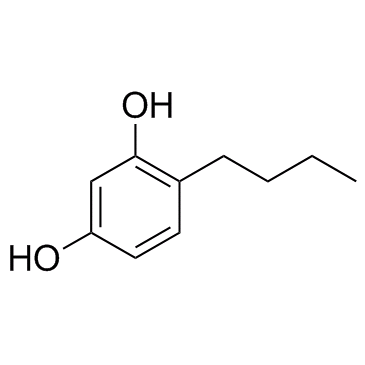
-
GC42351
4-carboxy TEMPO
4-carboxy TEMPO is a nitroxide and spin label.

-
GC60512
4-Carboxypyrazole
El 4-carboxipirazol es un metabolito endÓgeno.
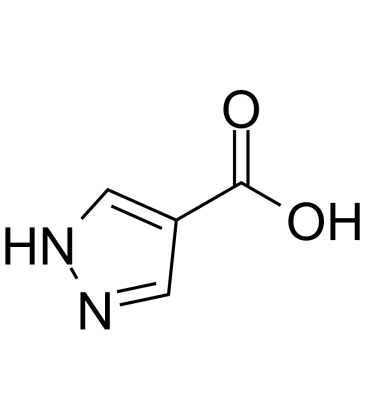
-
GC49722
4-CF3-TPP-DC
An inert mitochondriotropic carrier

-
GC13337
4-Chlorophenylguanidine hydrochloride
Urokinase inhibitor, potent and specific
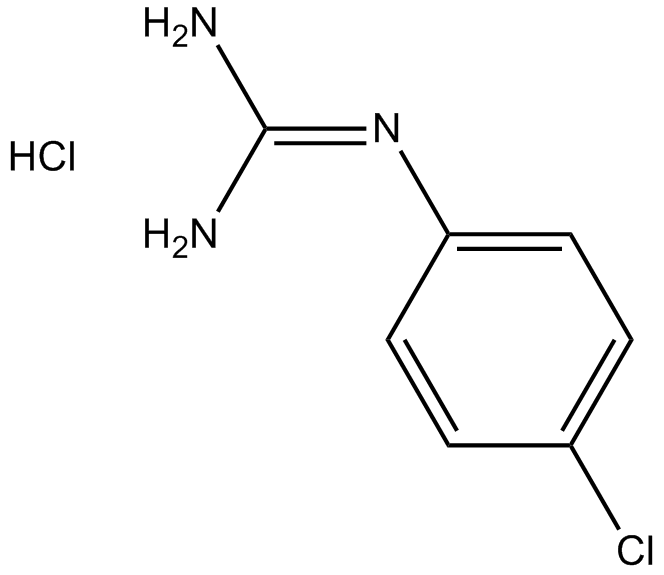
-
GC42370
4-desmethoxy Omeprazole
4-Desmetoxi Omeprazol es el metabolito activo de Omeprazol.

-
GC39245
4-Diethylaminobenzaldehyde
El 4-dietilaminobenzaldehÍdo es un inhibidor reversible de las aldehÍdo deshidrogenasas (ALDH), con una Ki de 4 nM para ALDH1. El 4-dietilaminobenzaldehÍdo muestra un potente efecto antiandrogénico (IC50 = 1,71 μM).
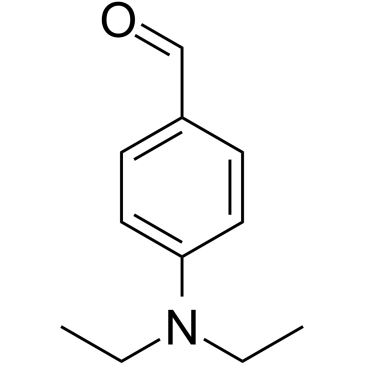
-
GC18359
4-Epianhydrochlortetracycline (hydrochloride)
4-Epianhydrochlortetracycline is a derivative of tetracycline .
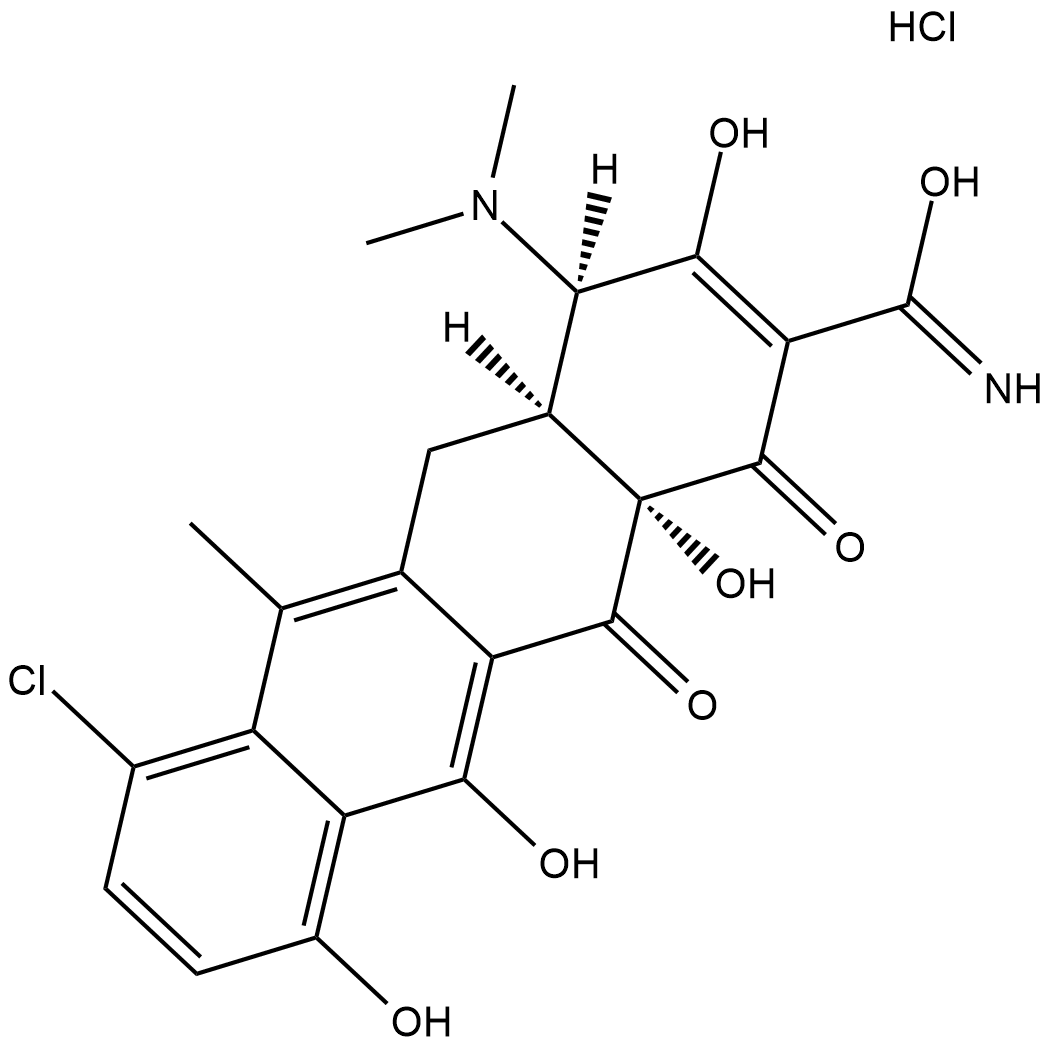
-
GC18194
4-Epidoxycycline
4-Epidoxycycline is the 4-epimer hepatic metabolite of the antibiotic doxycycline .
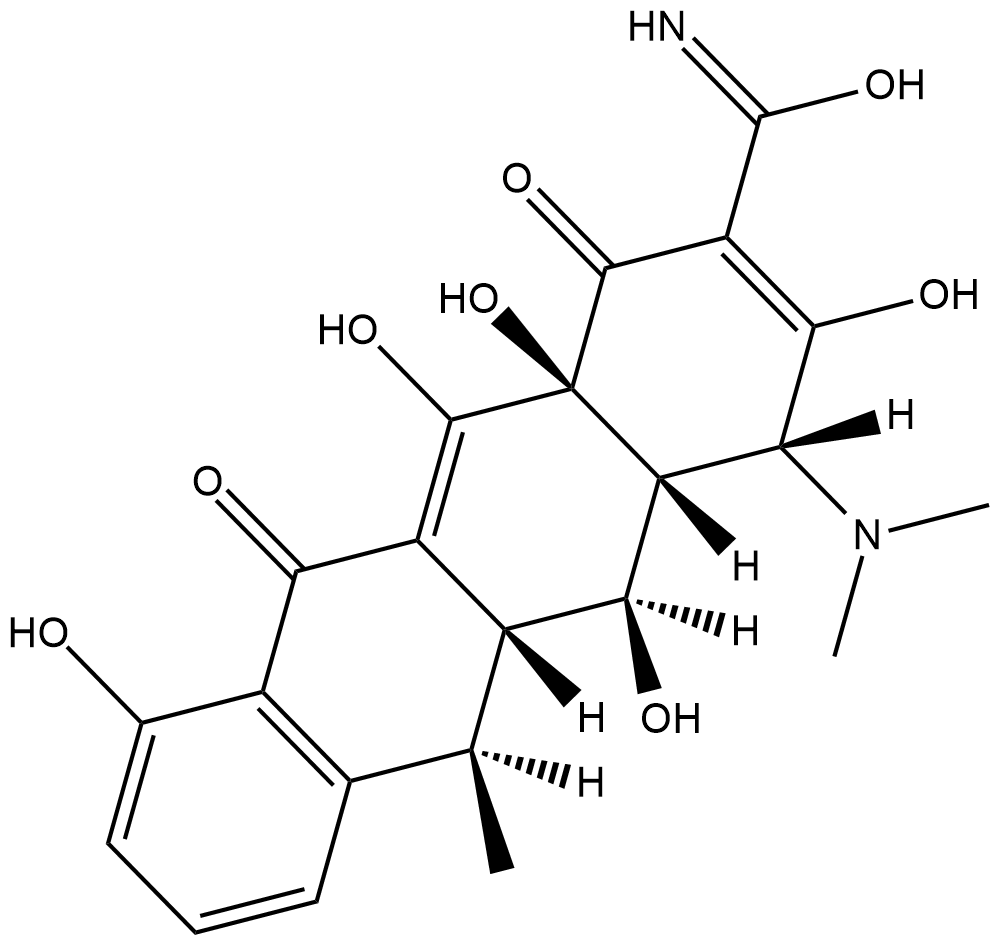
-
GC60514
4-Ethoxyphenol
El 4-etoxifenol es un metabolito endÓgeno.
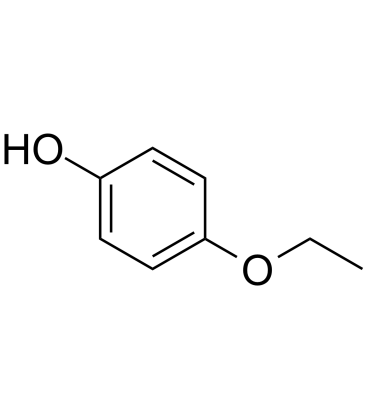
-
GC60515
4-Ethylbenzaldehyde
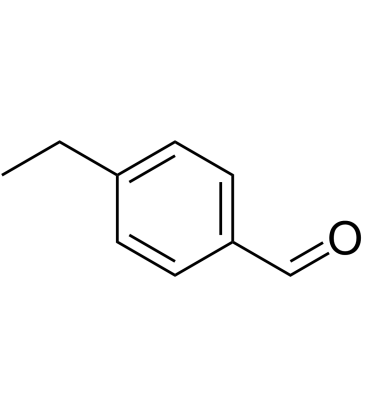
-
GC30600
4-Ethylphenol
El 4-etilfenol es un compuesto fenÓlico volÁtil asociado con malos olores en el vino.
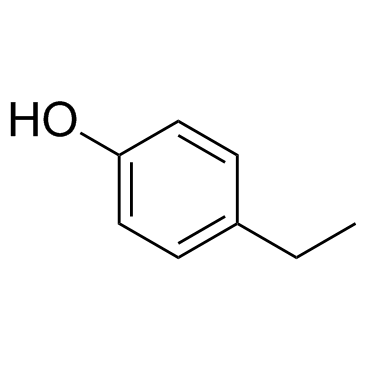
-
GC60516
4-Ethynyl-L-phenylalanine hydrochloride
El clorhidrato de 4-etinil-L-fenilalanina (clorhidrato de 4-etinil-L-fenilalanina) es un inhibidor potente, selectivo, reversible y competitivo de la triptófano hidroxilasa (TPH), con un Ki de 32.6 μM.
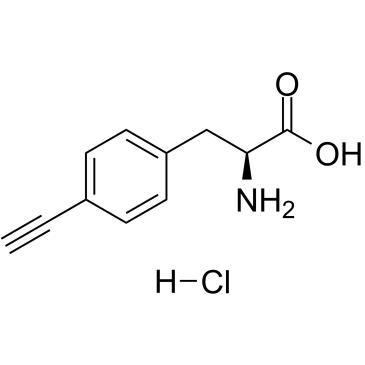
-
GC62803
4-Formylaminoantipyrine
La 4-formilaminoantipirinaes un metabolito excretado deaminofenazona.
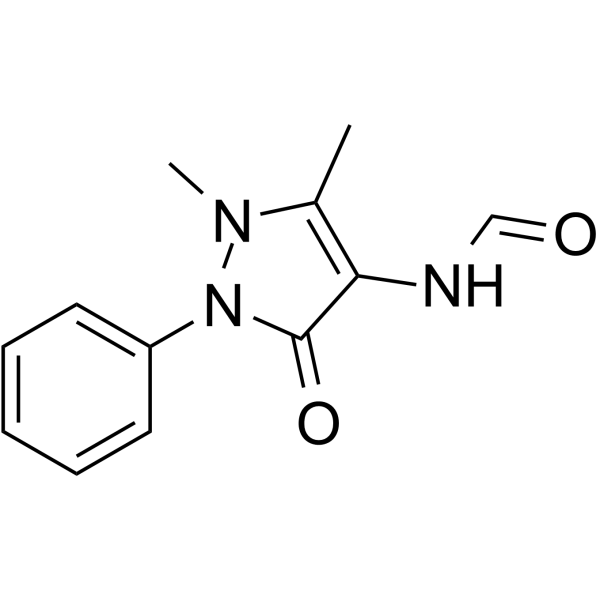
-
GC30630
4-Guanidinobutanoic acid
El Ácido 4-guanidinobutanoico es un metabolito normal presente en bajas concentraciones.
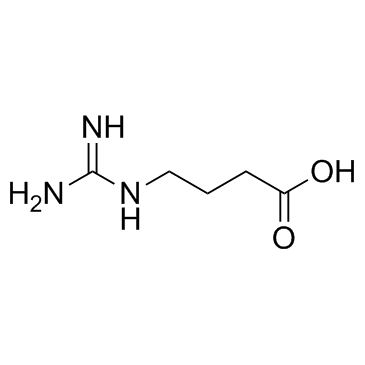
-
GC40097
4-HOBA
4-HOBA es un metabolito endÓgeno.

-
GC42401
4-hydroperoxy Cyclophosphamide
Un análogo activado de ciclofosfamida.

-
GC42405
4-hydroxy Atorvastatin (calcium salt)
4-hydroxy Atorvastatin is a metabolite of atorvastatin, an HMG-CoA reductase inhibitor present in formulations that have been used to treat hypercholesterolemia and certain dyslipidemias.

-
GC18425
4-hydroxy Atorvastatin lactone
4-hydroxy Atorvastatin lactone is a metabolite of atorvastatin , an HMG-CoA reductase inhibitor present in formulations that have been used to treat hypercholesterolemia and certain dyslipidemias.
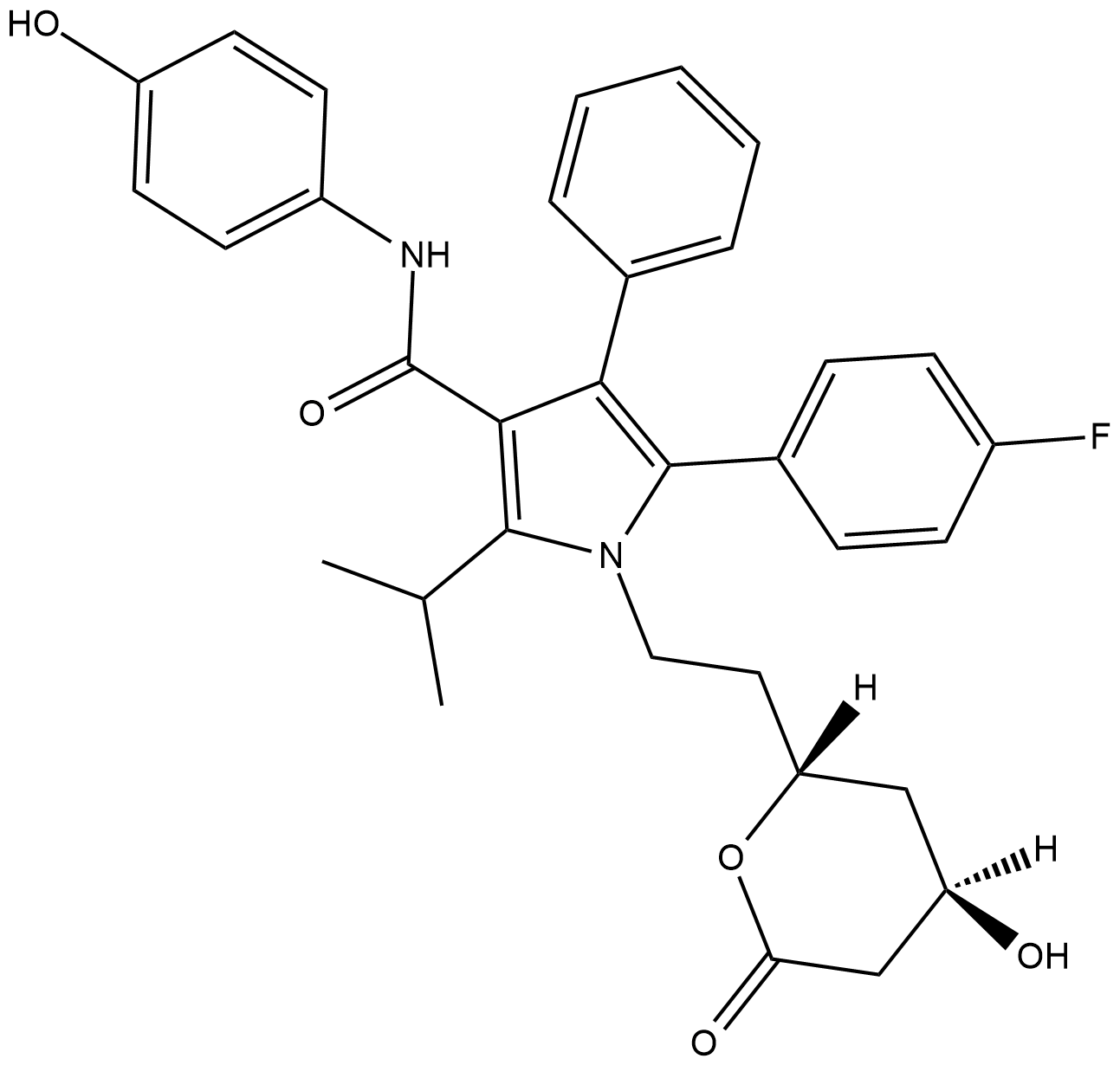
-
GC42407
4-hydroxy Diclofenac
El 4-hidroxi diclofenaco es un metabolito oralmente activo del diclofenaco por el citocromo P450 2C9 (CYP2C9).
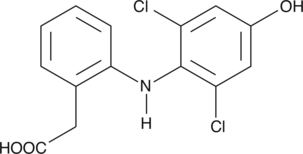
-
GC42410
4-hydroxy Nonenal
Un producto de peroxidación lipídica.

-
GC49575
4-hydroxy Omeprazole sulfide
A metabolite of omeprazole

-
GC40879
4-hydroxy Solifenacin N-oxide
4-hydroxy Solifenacin N-oxide is an N-oxide form of 4-hydroxy solifenacin, the major metabolite of solifenacin .

-
GC42415
4-hydroxy Valsartan
4-hydroxy Valsartan is a major metabolite of the angiotensin II type 1 (AT1) receptor antagonist valsartan.

-
GC18417
4-hydroxy Xylazine
4-hidroxi Xilazina es un metabolito de la xilazina.
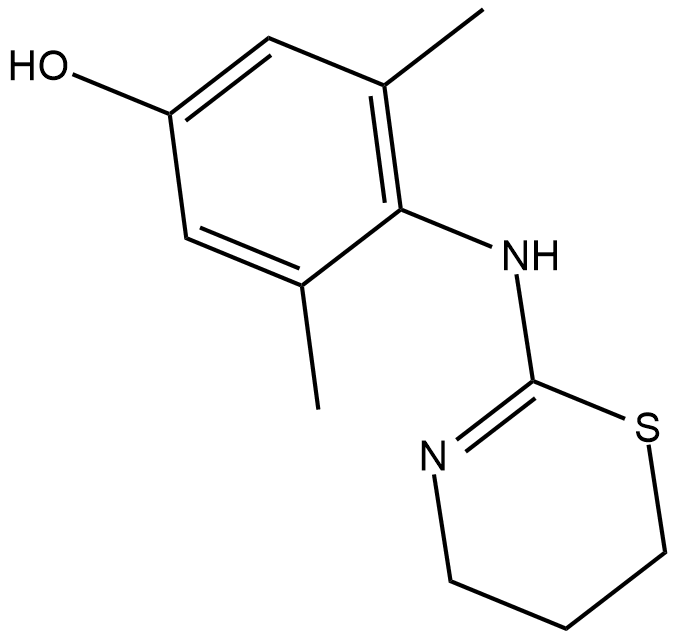
-
GC33656
4-Hydroxy-3-methylbenzoic acid
El Ácido 4-hidroxi-3-metilbenzoico es un Ácido orgÁnico normal identificado en muestras de orina de una poblaciÓn sana.
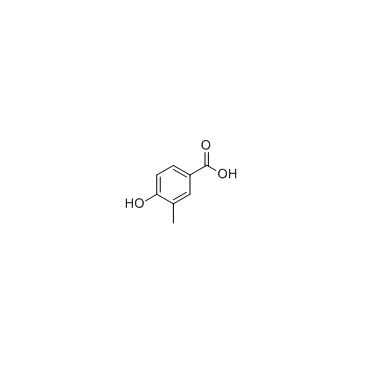
-
GC11270
4-Hydroxybenzoic acid
El Ácido 4-hidroxibenzoico, un derivado fenÓlico del Ácido benzoico, podrÍa inhibir la mayorÍa de las bacterias grampositivas y algunas gramnegativas, con una IC50 de 160 μg/mL.
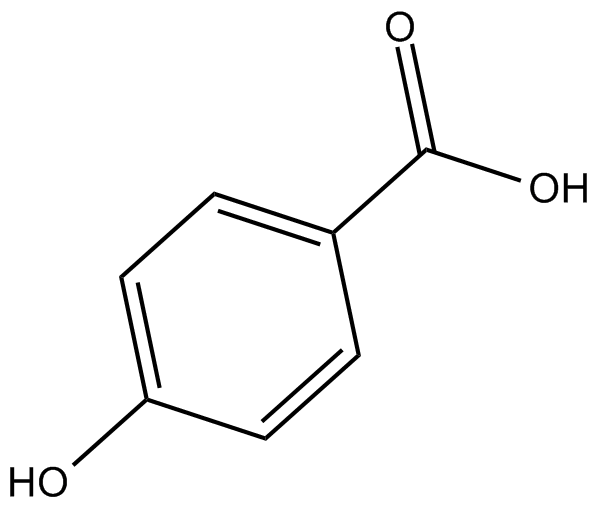
-
GC60518
4-Hydroxybenzyl cyanide
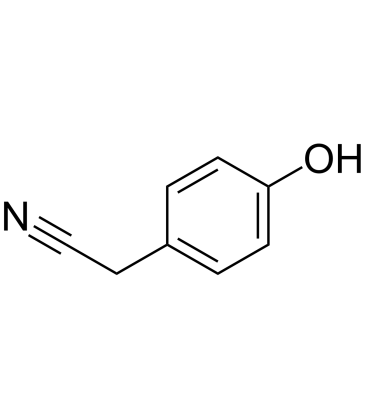
-
GC35131
4-Hydroxycoumarin
La 4-hidroxicumarina, un derivado de la cumarina, es uno de los andamios heterocÍclicos mÁs versÁtiles y se aplica con frecuencia en la sÍntesis de diversos compuestos orgÁnicos.
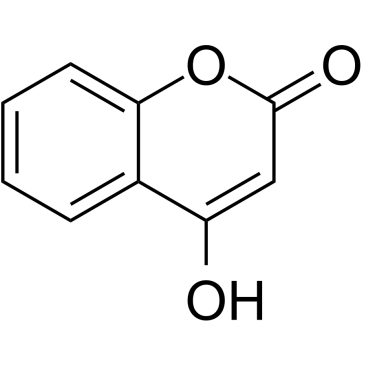
-
GC33610
4-Hydroxycyclohexanecarboxylic acid
El Ácido 4-hidroxiciclohexanocarboxÍlico pertenece a la clase de compuestos orgÁnicos conocidos como ciclohexanoles.
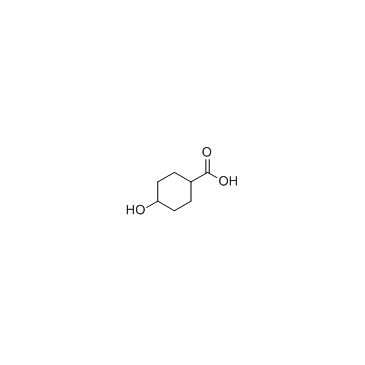
-
GC39691
4-Hydroxymethylpyrazole
El 4-hidroximetilpirazol es el principal metabolito del fomepizol.
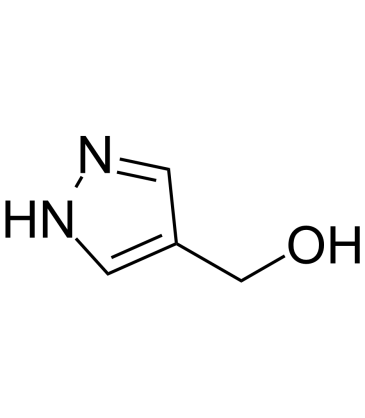
-
GC68055
4-Hydroxyphenyl acetate

-
GC33815
4-Hydroxyphenylacetic acid
El Ácido 4-hidroxifenilacético, un importante metabolito de los polifenoles derivado de la microbiota, participa en la acciÓn antioxidante.
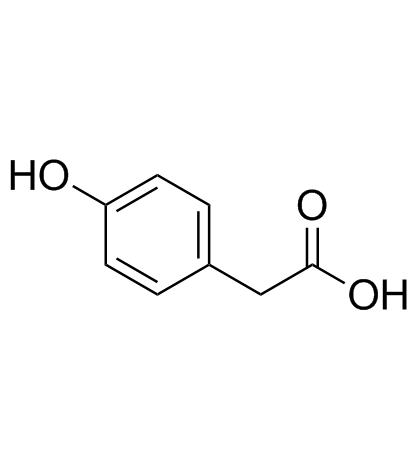
-
GC35134
4-Methoxybenzaldehyde
El 4-metoxibenzaldehÍdo es un compuesto fenÓlico fragante de origen natural.
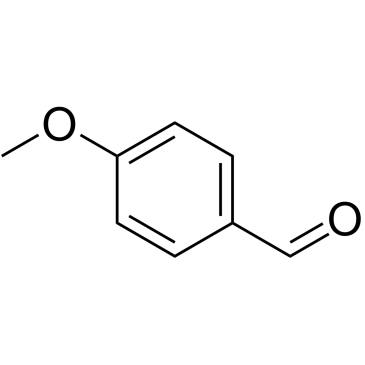
-
GC35135
4-Methoxycinnamic acid
El Ácido 4-metoxicinÁmico se detecta como fenilpropanoide natural en A.
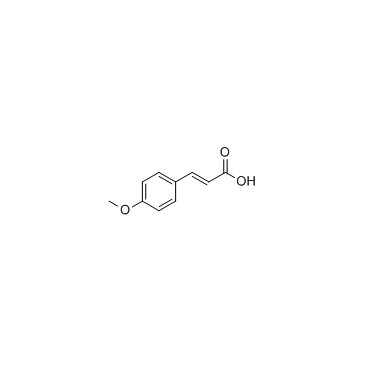
-
GC60521
4-Methyl-1-phenyl-2-pentanone
La 4-metil-1-fenil-2-pentanona es un metabolito endÓgeno.
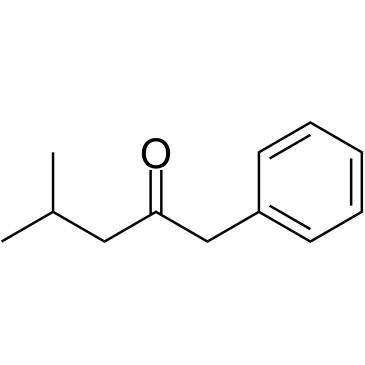
-
GC31307
4-Methyl-2-oxopentanoic acid
El Ácido 4-metil-2-oxopentanoico (Ácido α-cetoisocaproico), un metabolito anormal, es tanto una neurotoxina como una metabotoxina.
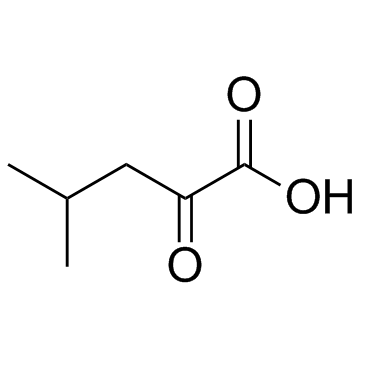
-
GC39307
4-Methylamino antipyrine
La 4-metilamino antipirina es un metabolito activo del metamizol.
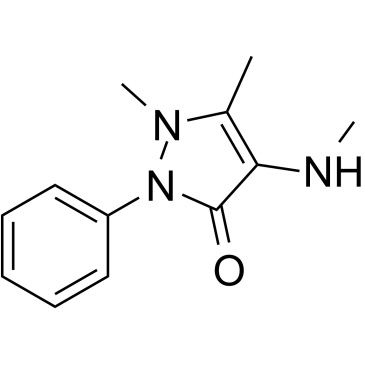
-
GC60523
4-Methylamino antipyrine hydrochloride
El clorhidrato de 4-metilamino antipirina es un metabolito activo del metamizol.
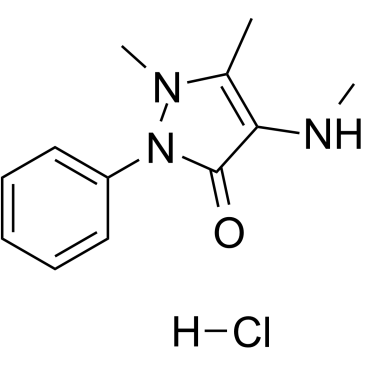
-
GC39780
4-Methylbiphenyl
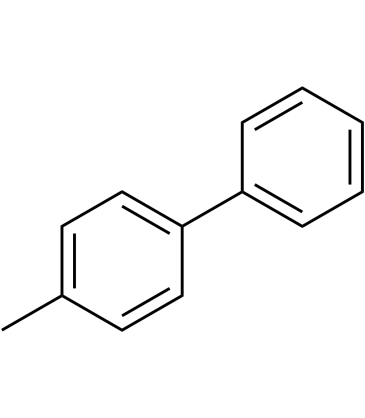
-
GC30658
4-Methylcatechol
El 4-metilcatecol, un metabolito del p-toluato, es un sustrato y un inhibidor suicida de la catecol 2,3-dioxigenasa.
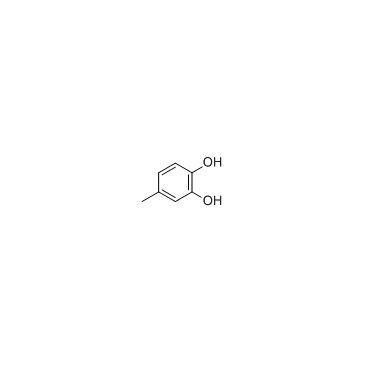
-
GC35139
4-Methylesculetin
La 4-metilesculetina es un derivado de cumarina natural activo por vÍa oral, con potentes actividades antioxidantes y antiinflamatorias.
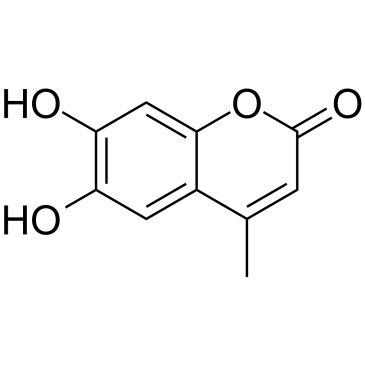
-
GC64621
4-Nitrocatechol
El 4-nitrocatecol es un potente inhibidor de la lipoxigenasa.
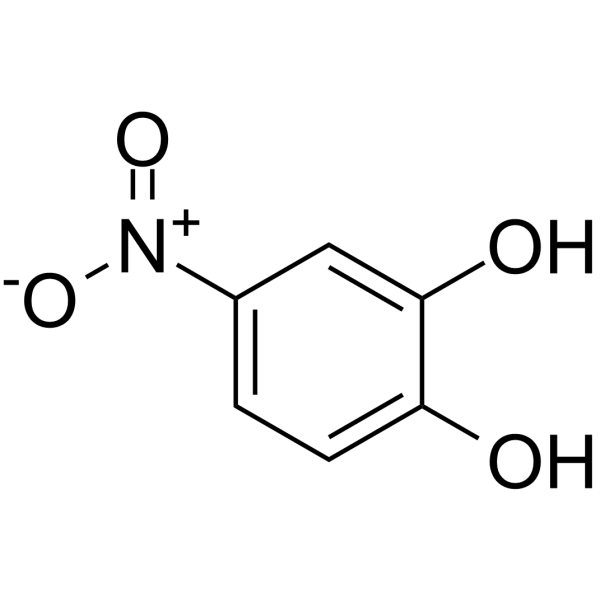
-
GC49127
4-oxo Cyclophosphamide
An inactive metabolite of cyclophosphamide

-
GC60524
4-Pentenoic acid
El Ácido 4-pentenoico es un metabolito endÓgeno.
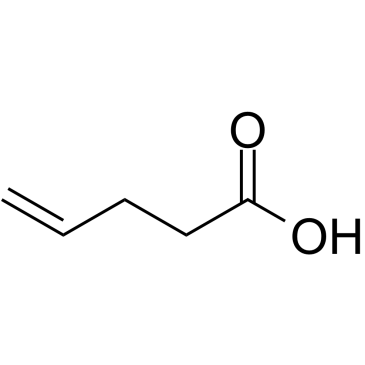
-
GC30670
4-Pyridoxic acid
El Ácido 4-piridoxico es un producto catabÓlico de la vitamina B6 que se excreta en la orina.
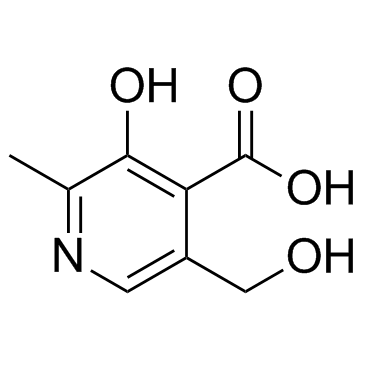
-
GC60525
4-Vinylphenol (10%w/w in propylene glycol)
El 4-vinilfenol se encuentra en la hierba medicinal Hedyotis diffusa Willd, el arroz silvestre y también es el metabolito del Ácido p-cumÁrico y ferÚlico de las bacterias del Ácido lÁctico en el vino. El 4-vinilfenol induce la apoptosis e inhibe la formaciÓn de vasos sanguÍneos y suprime el crecimiento de tumores de mama invasivos in vivo.
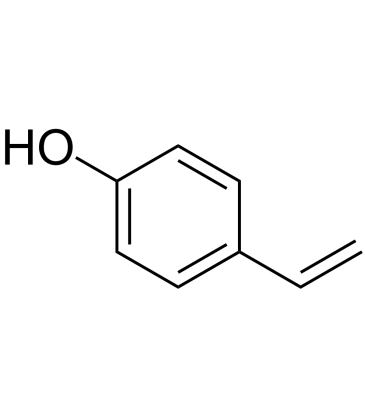
-
GC35126
4-Hydroxyphenylpyruvic acid
El Ácido 4-hidroxifenilpirÚvico es un intermediario en el metabolismo del aminoÁcido fenilalanina.
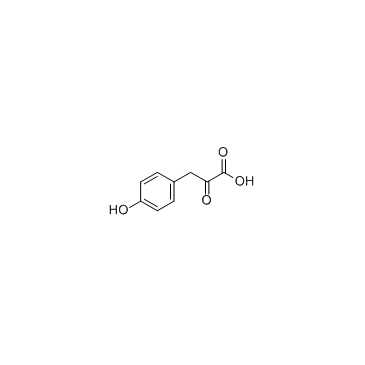
-
GC60531
5α-Cholestan-3-one
5α-Colestan-3-one es un metabolito endógeno.
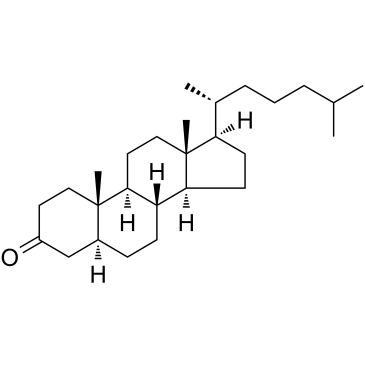
-
GC41399
5α-dihydro Levonorgestrel
5α-dihydro Levonorgestrel is a metabolite of the synthetic progestin levonorgestrel.

-
GC30669
5α-Cholestan-3β-ol (5α-Cholestanol)
5α-cholestan-3β-ol (5α-cholestanol) es un compuesto esteroide derivado.
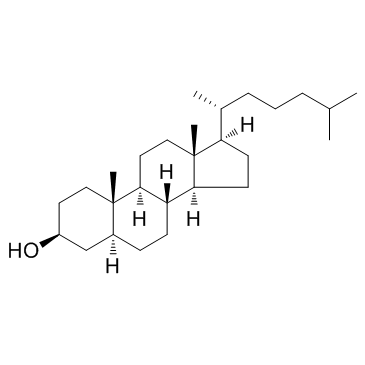
-
GC38358
5'-Cytidylic acid
5'-Ácido citidÍlico (5'-Ácido citidÍlico) es un nucleÓtido que se utiliza como monÓmero en el ARN.
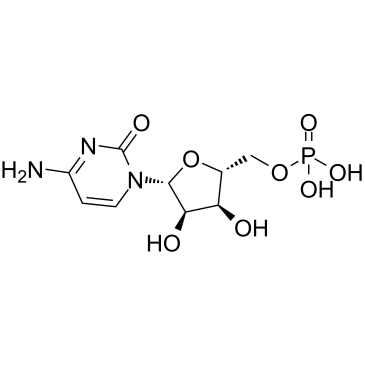
-
GC33636
5'-Deoxyadenosine
La 5'-desoxiadenosina es un nucleÓsido oxidado que se encuentra en la orina de sujetos normales.
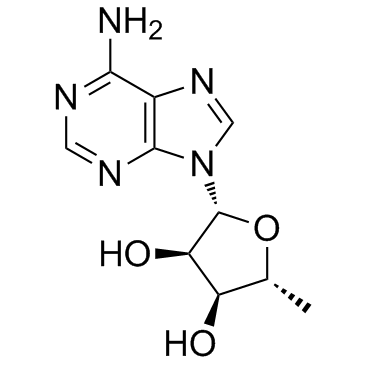
-
GC35157
5'-GTP trisodium salt
5'-la sal trisÓdica de GTP (5'-la sal trisÓdica de GTP) es un activador de las proteÍnas G transductoras de seÑales que estÁn involucradas en varios procesos celulares, incluida la proliferaciÓn, diferenciaciÓn y activaciÓn de varias cascadas de cinasas intracelulares.
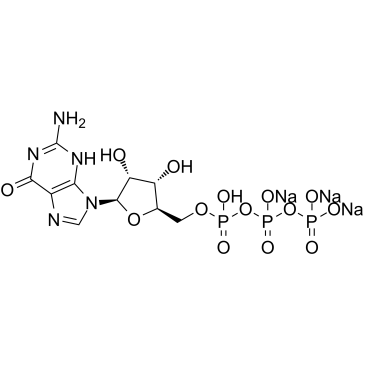
-
GC35159
5'-Guanylic acid disodium salt
La sal disÓdica del Ácido 5'-guanÍlico (sal disÓdica de 5'-GMP) se compone de restos de guanina, ribosa y fosfato y es un monÓmero de nucleÓtido en el ARN mensajero.
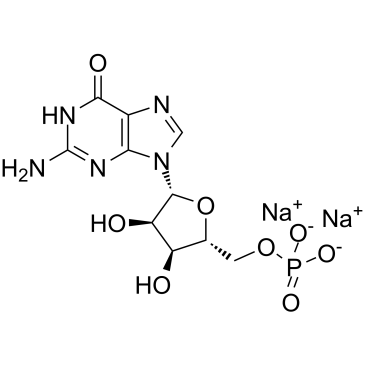
-
GC18582
5'-hydroxy Meloxicam
A metabolite of meloxicam
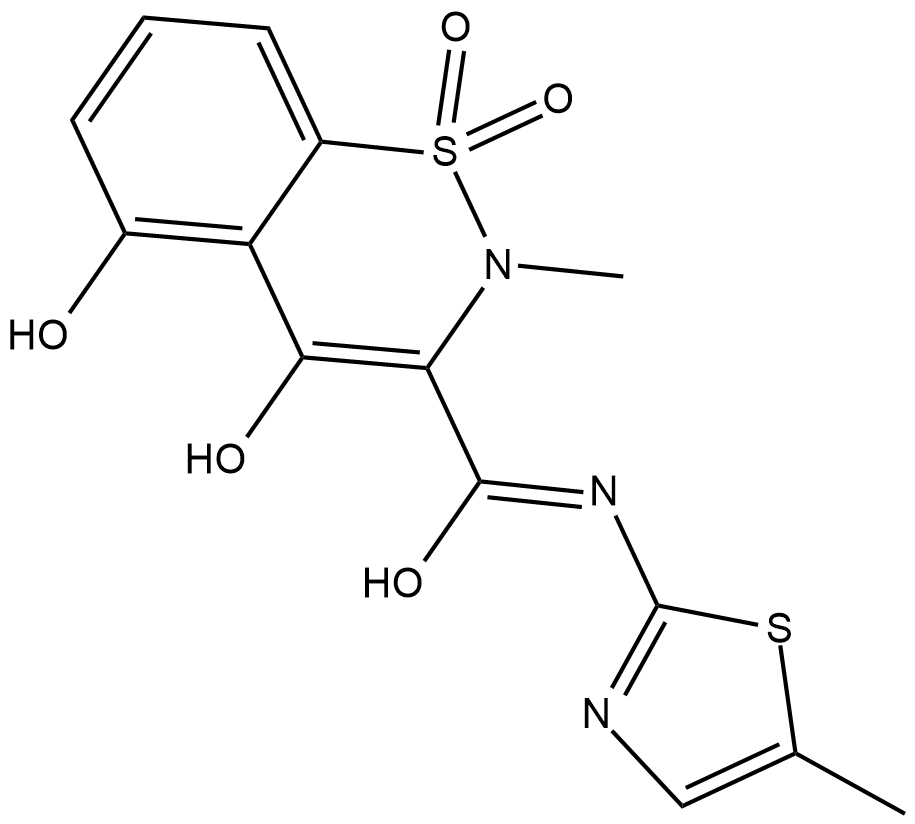
-
GC40459
5(R)-HETE
5(R)-HETE is a rare lipoxygenase product of arachidonic acid.

-
GC41126
5(S),12(S)-DiHETE
5(S),12(S)-DiHETE is a natural bioactive lipid derived from arachidonic acid.
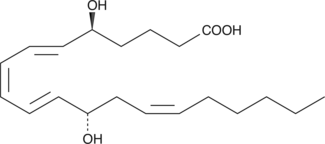
-
GC41127
5(S),15(S)-DiHETE
5(S),15(S)-DiHETE es un intermedio \5(S),15(S)-DiHETE is an “activated” intermediate, inhibits platelet aggregation with an IC50 of 1.3 μM.en_es_2021q4.md
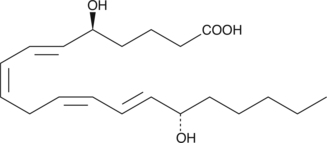
-
GC41128
5(S),6(R)-11-trans DiHETE
5(S),6(R)-11-trans DiHETE is a C-11 double bond isomer of 5(S),6(R)-DiHETE that is formed by the enzymatic isomerization of 5(S),6(R)-DiHETE by a membrane bound factor.

-
GC41129
5(S),6(R)-DiHETE
5(S),6(R)-DiHETE is a dihydroxy polyunsaturated fatty acid and a nonenzymatic hydrolysis product of leukotriene A4 (LTA4).

-
GC41131
5(S),6(S)-DiHETE
5(S),6(S)-DiHETE is one of the four diastereomeric 5,6-dihydroxy acids produced from the non-enzymatic hydrolysis of LTA4.



